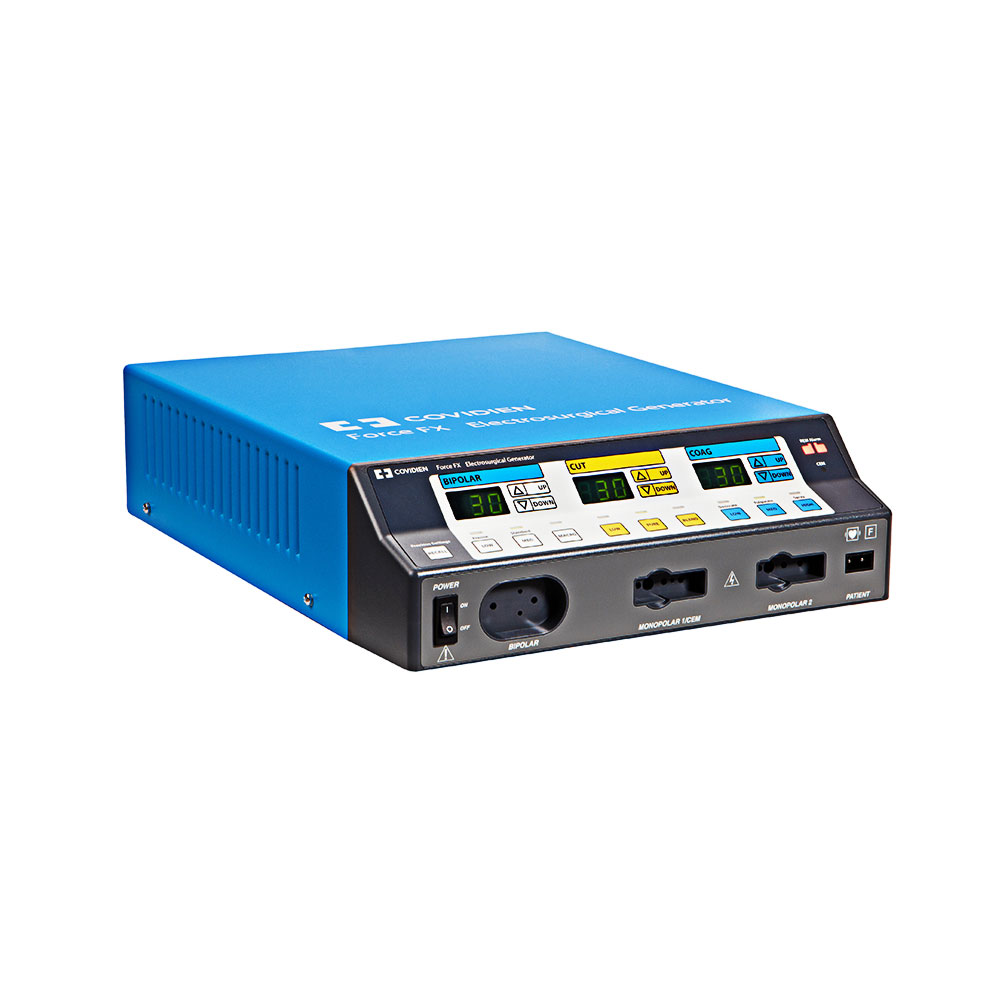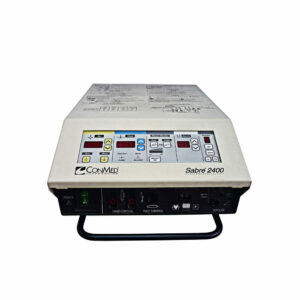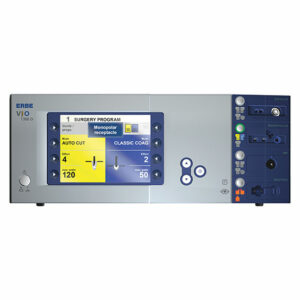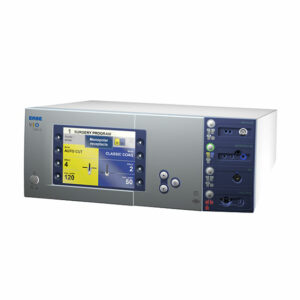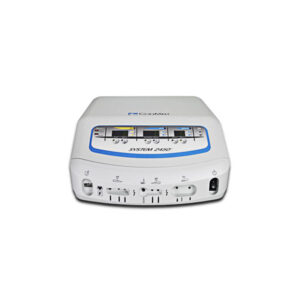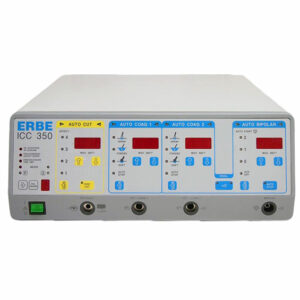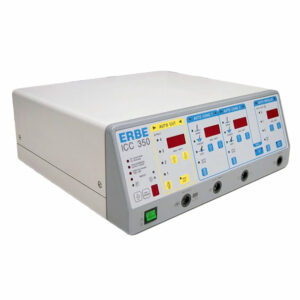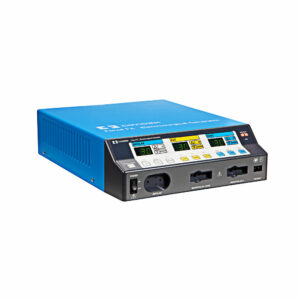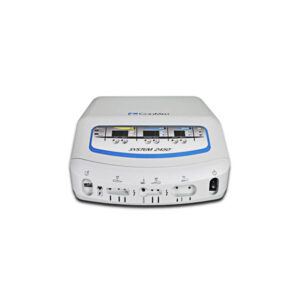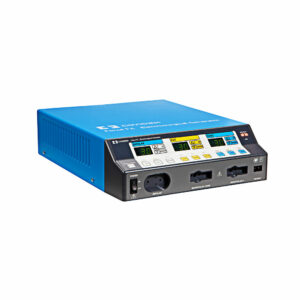
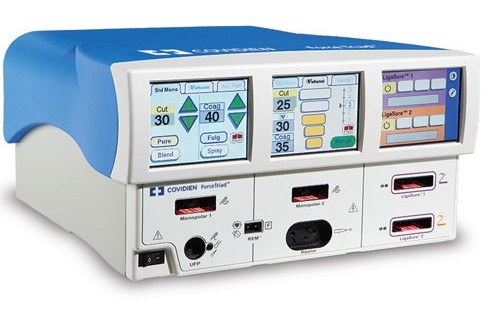

Valleylab Force Triad
Type: Electrosurgical Unit
Make: Valleylab
Model: Force Triad
Condition: Refurbished
Availability: In-Stock
Status: Supported by OEM
- Description
- Specification
- Documents
Description
General
- Output Configuration: Isolation output.
- Cooling: Natural convection and fan.
- Display: Three LCD touch screens.
- Connector ports: LED illuminated Smart connector readers
- Force Triad energy platform cart (FT900) Universal.
- Mounting cart (UC8009), and/or the UC8010 Over-shelf.
- Operating room boom systems.
- Any Stable, flat surface such as a table or cart top.
Dimensions and Weight
- Height: 25.5 cm (10 in.)
- Width: 45.8 cm (18 in.)
- Depth: 50.8 cm (20 in.)
- Weight: 13.6 kg (30 lbs)
Activation Tone
- The audio levels stated below are for activation tones (cut, Valleylab, coag, bipolar, and LigaSure Modes) and alarm tones (REM and system alarms) at a distance of one meter.
Volume and Frequency
- Volume (adjustable): 45 to 65 dBA
- Frequency Cut: -660 Hz
- Valleylab: 800 Hz.
- Coag: 940 Hz.
- Bipolar: 940 Hz.
- LigaSure: 440 Hz.
- Duration: Continuous while the system is activated.
Alarm Tone
- Volume (adjustable): >65 dBA.
- Frequency: -REM: 660 Hz.
- Regrassp: Two tones: High= 985 Hz, Low = 780 Hz.
- Seal Complete: 985 Hz.
- Error/System Alert: Beep tone = 1400 Hz.
- Duration:
- REM: Two 1/2 second tones separated by 1/2 second for each REM event
- Reactivate/Regrassp: Four 175 msec tones-high, low, high–low separated by 1/2 second.
- Check Instrument: Six 175 msec tones – high, low, high low, high, low -Seal Complete: Two 175 msec tones separated by 175 msec for each Seal Complete event.
- Error/System Alert: Two 1/2 second tones separated by 1/2 second for each Error/ System Alert event.
REM Contact Quality Monitor
- Interrogation frequency: 80 kHz ± 10 kHz
- Interrogation current: < 100μA
- Interrogation voltage: < 12V RMS
Acceptable Resistance Range
- REM resistance measurements are ± 10% during RF activation and ± 5% when RF output is not activated.
- REM patient return electrode: 5 to 135 ohms or up to a 40% increase in the initial measured contact resistance (which ever is less).
- If the measured resistance is outside the acceptable range(s) noted above, a REM fault condition occurs.
REM Alarm Activation
- REM patient return electrode: When the measured resistance exceeds the standard range of safe resistance (below 5 ohms or above 135 ohms) or when the initial measured contact resistance increases by 40% (whichever is less), the REM alarm indicator enlarges and flashes red and yellow, a tone sounds twice, and RF output is disabled. The indicator remains illuminated red and yellow until you correct the condition causing the alarm. Then, the indicator illuminates green and RF output is enabled.
Autobipolar
- The ForceTriad energy platform is equipped with an autobipolar feature that allows for automatic activation of bipolar energy.
- Note: The autobipolar electrode function requires the use of the Valleylab E0018 bipolar Instrument cord.
- Autobipolar Specificaitons:
- Interrogation frequency: 80 kHz ± 10 kHz.
- Interrogation current: < 100 μA.
- Activation impedance: 20 Ω to 500.
- Deactivation impedance: User selectable: 1,500 Ω 1,800 Ω or 2,200 Ω.
- Measurement accuracy: ± 14% of Full Scale activation impedance while keying active above 10 watts.
- + 50%, -14% of full scale activation impedance while keying active at 10 watts or below.
- ± 5% of Full Scale activation impedance while keying inactive.
- Keying delay: User selectable in 500 msec increments from 0 sec to 2.5 sec
Duty Cycle
- Under maximum power settings and rated load conditions, the ForceTriad energy platform is capable of operating a duty cycle of 25% defined as 10 seconds active and 30 seconds inactive, in any mode for a period of 4 hours.
- Caution
- Use of duty cycles greater than 25% (10 seconds active followed by 30 seconds inactive) will increase the risk that heat build-up under a return electrode may be high enough toinjure the patient. Do not continuously activate for longer than one minute.
Low Frequency (50/60 Hz) Leakage Current
- Enclosure source current, ground open <300 μA.
- Source current, patient leads, all outputs
- Normal polarity, intact ground: < 10 μA.
- Normal polarity, ground open: < 50 μA.
- Reverse polarity, ground open: < 50 μA.
- Mains voltage on applied part: < 50 μA.
- Sink current at high line, all inputs<50 μA
Input Power
100-120 Volt
- Maximum VA at nominal line voltage:
- Idle: 52 VA
- Bipolar: 450 VA
- Cut: 924 VA
- Coag: 530 VA
- Input Mains Voltage, Full Registration Range:
- 90-132 Vac
- Input Mains Voltage, Operating Range:
- 85-132 Vac
220-240 Volt
- Maximum VA at nominal line voltage:
- Idle: 52 VA
- Bipolar: 450 VA
- Cut: 924 VA
- Coag: 530 VA
- Input Mains Voltage, Full Registration Range:
- 208-264 Vac
- Input Mains Voltage, Operating Range:
- 170-264 Vac
100-120 Volt
- Mains Current (Maximum):
- Idle: 0.4 A
- Bipolar: 2.0 A
- Cut: 7.0 A
- Coag: 4.0 VA
- LigaSure: 5.0 VA
- Mains Line Frequency Range (Nominal):
- 50 Hz to 60 Hz
- Fuses (2): 5mm x 20 mm A8, 250 V:
- Fast Blow
- Power cord: 3-prong hospital grade:
- Connector
220-240 Volt
- Mains Current (Maximum):
- Idle: 0.2 A
- Bipolar: 1.0 A
- Cut: 3.5 A
- Coag: 2.0 VA
- LigaSure: 2.5 VA
- Mains Line Frequency Range (Nominal):
- 50 Hz to 60 Hz
- Fuses (2): 5mm x 20mm A8, 250 V:
- Fast Blow
- Power cord: 3-prong hospital grade:
- Connector
Additional information
| Manufacturer | |
|---|---|
| Name | |
| Part Number | Triad |
| Specialty | |
| Maximum Cut Power | |
| Product Type | |
| Cut Frequency | |
| Cut Modes | |
| Maximum_Coagulation_Power | |
| Coag Frequency kHz | |
| Coagulation Modes | |
| Bipolar Output Power | |
| Bipolar Frequency | |
| Type | |
| Return Electrode Monitoring |



